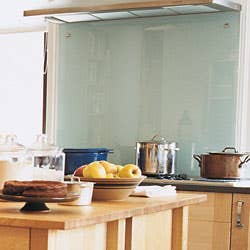
Secrets of the Saveur Kitchen, Part IV
Part IV: Improving Your Recipes—learn the helpful tips that the SAVEUR test kitchen staff acquired along the way while improving their recipes.
There's always something bubbling on the SAVEUR test kitchen stove—in part because we love cooking and eating and also because we constantly seek to improve our recipes. After we've tasted a dish for the first time, we reexamine the original version of the recipe to decide how to make the recipe clearer and ensure an even more delicious result. Should the sauce be richer or lighter, and what's the best way to make it so? Can we reduce the number of ingredients, or will doing that diminish the dish? Will the recipe introduce a new ingredient or method to readers that we'll need to explore and test further before we try to formulate the recipe again?
Because the SAVEUR office houses both our editorial staff and our test kitchen, editors are able to participate in the testing and to see and taste the dishes that will appear in the stories they're working on. Their input often prompts colorful conversations and necessitates difficult decisions, and our final dishes are all the tastier for that. We think that the aromas of roasts and cakes wafting from the kitchen promote better editing, too!
If you'd like to improve a few recipes of your own, keep the following tips in mind.
1. Allow a dish to showcase its origins by using authentic ingredients. Even when we're at our busiest in the SAVEUR kitchen, it's worth a few extra minutes of shopping to acquaint ourselves with something new. For example, pimenton (a beloved Spanish smoked paprika) makes the flavors in a cazuela of lamb stew much deeper than common sweet paprika does. Once you've found and tried it, pimenton will surely become a new staple in your pantry.
2. If you choose to simplify a recipe, consider only shortcuts that will preserve the integrity of the dish. Slicing leeks thinly instead of cutting them into a perfect julienne will yield a similar outcome, whereas the failure to strain a fine French sauce will make for an uneven result.
3. If you don't own and cannot find special equipment that a given recipe calls for, research alternatives that can match the intended effect. For example, most recipes call for whipping cream in a copper bowl to keep the cream cool, which encourages the cream to whip up more stiffly. A frozen metal bowl and whisk make a fine substitute.
4. Refer to photos closely if they accompany a recipe. They can provide important details about texture, size, and ingredients that might not otherwise be clear.
5. When you're cooking for others, you'll want to make sure your dish will be a crowd pleaser. Let someone besides you taste your finished dish. That will help to guarantee that you're seasoning according to the tastes of many rather than of just one.
Keep Reading
Continue to Next Story










